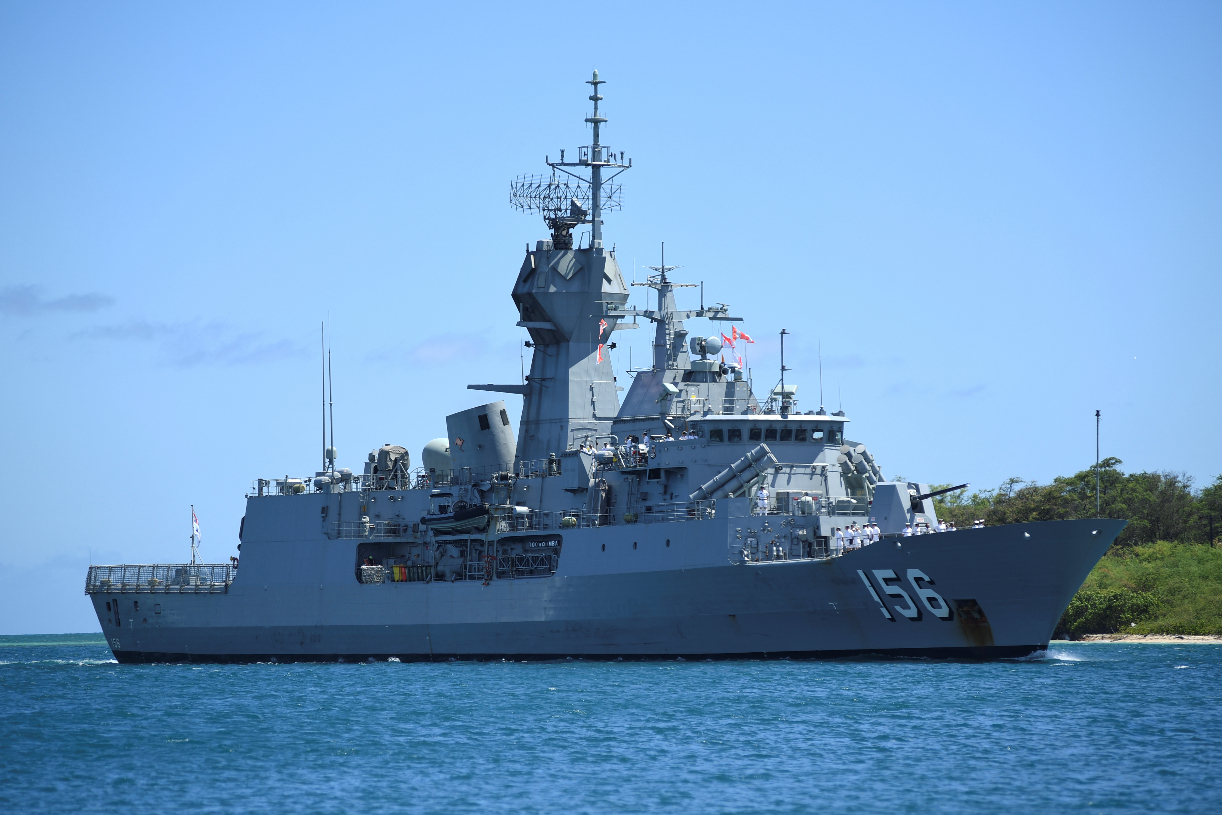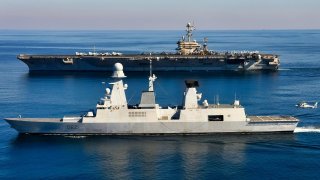U.S. Navy and Allied Aircraft Carriers and Submarines are Now Training for a China War
The Rim of the Pacific Exercise (RIMPAC) 2024 is underway in the Indo-Pacific, showcasing the combat capabilities of the U.S. and its allies. Chief of Naval Operations Adm. Lisa Franchetti emphasized the importance of interoperability, partnerships, and submarines in future conflicts, particularly with China.
Summary and Key Points: The Rim of the Pacific Exercise (RIMPAC) 2024 is underway in the Indo-Pacific, showcasing the combat capabilities of the U.S. and its allies.

-Chief of Naval Operations Adm. Lisa Franchetti emphasized the importance of interoperability, partnerships, and submarines in future conflicts, particularly with China.
-The exercise involves dozens of countries, numerous warships, aircraft, and thousands of troops. RIMPAC highlights the U.S. commitment to defending the region and maintaining peace and stability. The U.S. Navy's submarine fleet, the largest in the world, plays a critical role in this deterrence effort.
RIMPAC Is Aimed Right at China
Rim of the Pacific Exercise 2024 is currently underway in the Indo-Pacific, with dozens of countries participating.
One of the largest military exercises in the world, RIMPAC illustrates for China the combat capabilities of the United States and its allies.
Chief of Naval Operations Adm. Lisa Franchetti, the top naval officer in the U.S. military, and Master Chief Petty Officer of the Navy James Honea visited the units participating in the exercise. Their statements hinted at the Navy’s priorities in any future showdown with China.
Interoperability, Submarines, and Partnerships
“RIMPAC is the world's premier joint and combined exercise in the maritime domain. It’s a great opportunity to operate, to train, and to build interoperability with an amazing cross section of Allies and partners, from the Indo-Pacific to the Americas and to Europe,” Franchetti said in a press release.
Dozens of countries are taking part in the exercise. They bring scores of warships and support vessels, hundreds of combat aircraft, and thousands of troops.
“It’s really important that we work together on areas of mutual concern to maintain freedom of the seas and uphold the rules based international order that has supported peace, stability and prosperity for so many years,” the top officer in the Navy added.
During their visit, the officials focused on the importance of submarines to U.S. military deterrence.
“Central to my America’s Warfighting Navy is the need to put more players on the field, and that applies to our submarines,” Adm. Franchetti stated.
“I know that we can’t deter and win against our would-be adversaries without getting all our submarines on the field. Whether it’s new construction ships or those in maintenance, we need to get these platforms in and out of the shipyard on time and on cost,” she added.
The U.S. Navy operates the largest and most capable submarine fleet in the world, with more than 70 nuclear-powered submarines of several different types. With attack submarines and ballistic-missile subs, the Navy’s submarine fleet can do a lot in a potential war.
“And, we have to get all the people – with the right skills, tools and training – to man our submarines. That’s all more players on the field, and you did that. I am so proud of you for all that you accomplished,” Franchetti said.
In response to Chinese aggression in the Indo-Pacific, the United States is presenting a powerful block of allies and partners as deterrence. Beijing might be investing hundreds of billions of dollars every year on its military, but its authoritarian approach to global affairs is alienating neighbors, who instead turn to the U.S. for protection and security. Despite the ongoing challenge of the Ukrainian conflict, the U.S. remains strong in the Indo-Pacific, the area of operations that is most important to the future. Exercises like RIMPAC are designed to highlight America’s commitment to defend the region from malicious activity.

“The United States is an Indo-Pacific nation. We know that our partnerships in this region make a difference–that friendship is strength. We don't take that for granted,” said Franchetti.
RIMPAC is the largest international maritime exercise in the world. It started in 1971, and this year’s is the 29th RIMPAC. The training covers a range of mission sets, including carrier operations, anti-submarine warfare, surface warfare, air combat, amphibious operations, Visit, Board, Search, and Seizure, maritime security operations, and disaster relief.
About the Author
Stavros Atlamazoglou is a seasoned defense journalist specializing in special operations and a Hellenic Army veteran (national service with the 575th Marine Battalion and Army HQ). He holds a BA from the Johns Hopkins University and an MA from the Johns Hopkins’ School of Advanced International Studies (SAIS). His work has been featured in Business Insider, Sandboxx, and SOFREP.
All images are Creative Commons and/or Shutterstock.


